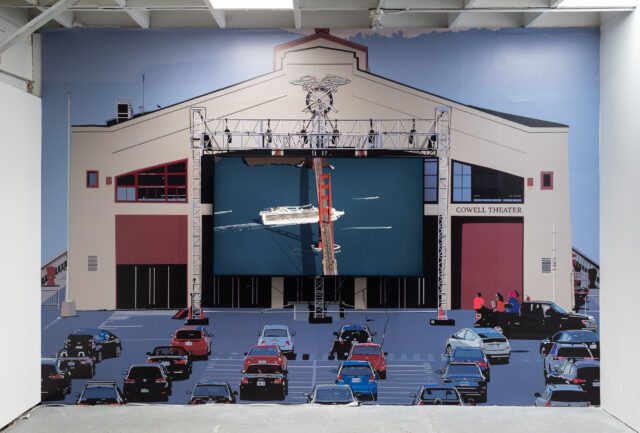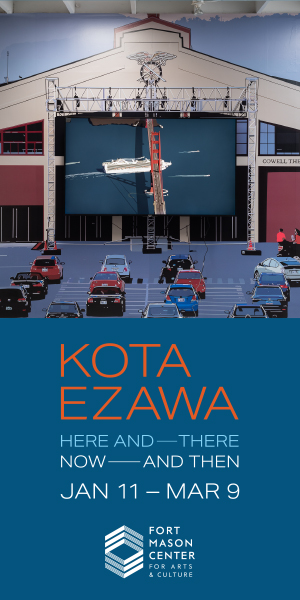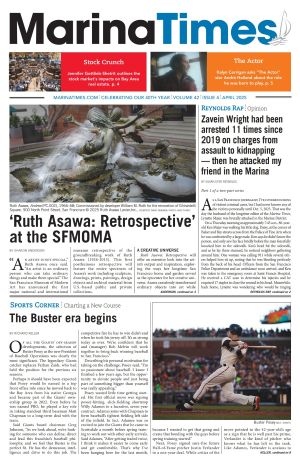Kota Ezawa’s art, which repurposes source imagery from news footage and film, will be on display at the Fort Mason Center for Arts & Culture. Charged depictions of events like the OJ Simpson trial, footage of NFL players kneeling in protest during the National Anthem, artworks stolen from the Isabella Stewart Gardner Museum, and other iconic images locked in our cultural consciousness are repackaged in his art. In Here and There, Now and Then, Ezawa uses his digitally drawn and animated art to revisit recent historical events in San Francisco. Nine of his works will be on display at the former military base in keeping with the Fort Mason Center’s approach to repurposed spaces, and in the process, finding new meaning in history via creativity.
“The Love Boat” Lost
The vessel Grand Princess progressing to the port of Oakland and quarantining during the early months of the COVID-19 pandemic is represented in Grand Princess (2024). The drama plays out reframed by Ezawa as a movie playing at Fort Mason FLIX, FMCAC’s pandemic-era pop-up drive-in movie theater. In this work, the artist commissions a cover of “I Left My Heart in San Francisco” by the Red Room Orchestra featuring Petra Haden, underscoring this now-historical moment’s many tones of anxiety, grief and dread.
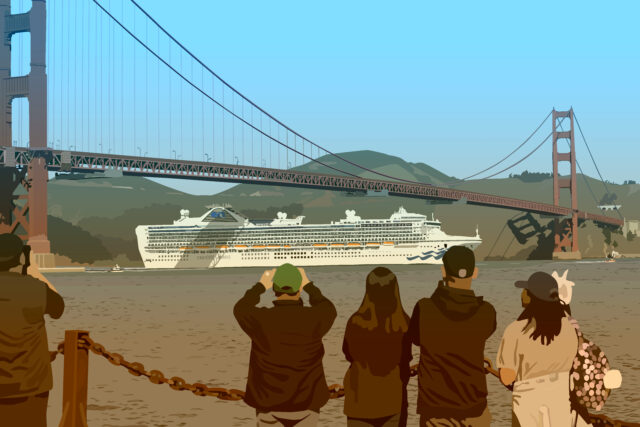
Alcatraz Revisited
Native Americans took over Alcatraz Island and held it as Indian land from Nov. 20, 1969, to June 11, 1971, a landmark event that brought a great deal of attention to Native activism. Ideas of resistance and remembrance play out in Alcatraz Is an Idea (2024). A collaboration with writer and activist Julian Brave NoiseCat, the artwork highlights scenes from 2019’s Indigenous Peoples’ Day Alcatraz Canoe Journey. Indigenous peoples of all nations from the West Coast and beyond participated in this boat journey which commemorated the 50th anniversary of the 1969 occupation of Alcatraz.
Remembering Art History and Resistance in Merzbau 1, 2, and 3
The Merzbau (1923-37), a room-sized sculpture by artist Kurt Schwitters, remains one of the most important artworks of the 20th century. After founding a Dada group in Hanover, Schwitters filled his home with approximately 40 sculptural constructions, converting it into a living, cubist-inspired installation he called Merzbau. (Merz was Schwitters’ word for collage and bau means building.)
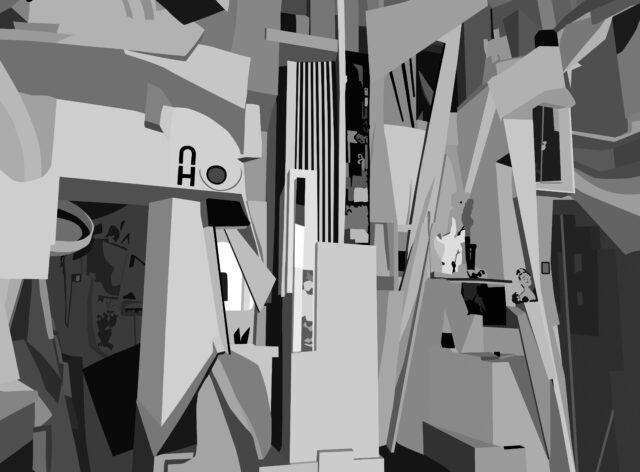
This accumulating artistic environment was abandoned when the artist fled to Oslo after his work had been included in the Nazi’s 1937 Degenerate Art exhibition. The building was destroyed by Allied air raids in 1943, but Wilhelm Redemann’s photographs fortunately gave Schwitters’ Merzbau an afterlife as a precursor to postwar and contemporary installation art. In Merzbau 1, 2, and 3, Ezawa takes these photographs and digitally reproduces these documents of Schwitters’ lost world in a room installation including three light-boxes, wallpaper and a video recreation of Schwitters’ sound poem, Ursonate (2022).
Other Ezawa Works on View
Ezawa’s National Anthem (2018/2024) — a single-channel video and vinyl wallpaper — is featured in the “Count Me In” exhibit, one of seven related presentations inspired by sports currently at SFMOMA. National Anthem is a tribute to San Francisco 49ers then-quarterback Colin Kaepernick and other NFL players kneeling during the national anthem in 2016, in silent protest of racial inequality and injustice on and off the football field.
“San Franciscans have lived through extraordinary times — financial boom and bust cycles, wars, global pandemics, cultural upheavals, and struggles for human rights and freedom,” said Frank Smigiel, Director of Arts Programming and Partnerships at FMCAC. “Ezawa’s work doesn’t just remind us of these moments; it invites us to see them anew, finding unexpected connections between crisis and creativity, between our past and our possible futures.” Kota Ezawa successfully renders and reshapes our memories of history and shared experiences of resistance.
This exhibition is part of FMCAC’s signature Gallery 308 exhibition series, which presents leading contemporary artists, including Sophie Calle, Janet Cardiff, Joan Jonas, Sir Isaac Julien, Sunny A. Smith, and the late Bonnie Ora Sherk.
Sharon Anderson is an artist and writer in Southern California. She can be reached at mindtheimage.com

